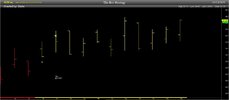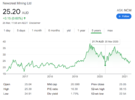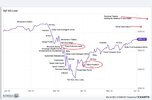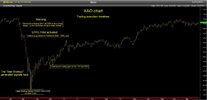- Joined
- 8 June 2008
- Posts
- 13,248
- Reactions
- 19,559
if it helps:@qldfrog I've used both (TSI) indicators with success combing an "AND" & "OR" statement annexed to the buy condition. Using both indicators reduce false breakouts of forming trends.
A simple line of code
Using the zero-line of the "True Strength Index" (TSI) oscillator has strong trading applications, so has the "Tend Strength Index" (TSI) under certain conditions - using both indicators with filters & tuned parameters certainly adds value.
Sample Code for @qldfrog
BuyTSIsetup = TSI AND sig > 0 OR TSIndicator > 1.65;
In English
When the double smoothed (TSI) & the signal line are both higher than zero - forms the first part of the buy condition. The "OR" statement becomes an additional buy condition. So, if the "Tend Strength Index" (TSI) is greater than 1.65 (the standard measure of trend strength) is the other buy signal (but limited). Add parameters & other filters to the system & it becomes a worthy trend strategy.
Skate.
working with TSI, I get indeed VERY good win rates:in the 60% '
well well above my usual figures..yet I do not manage to better my existing system overall return, DD CAR etc
This is a new situation for me, so maybe I need to check my exit in a different light
very interesting





